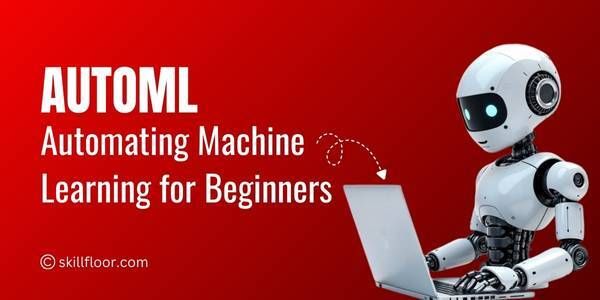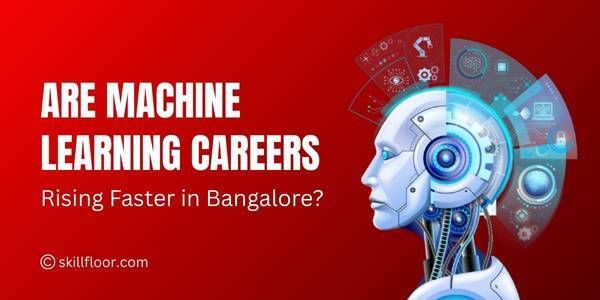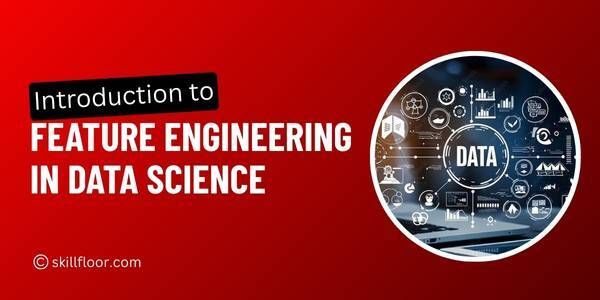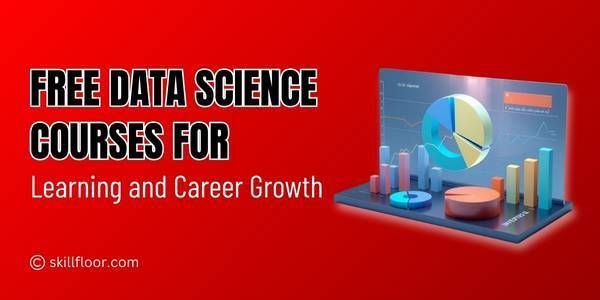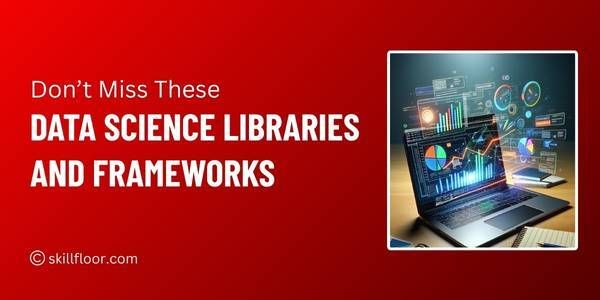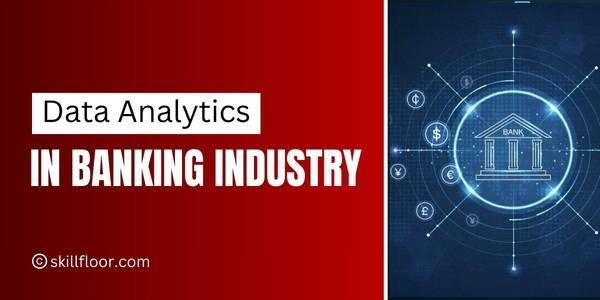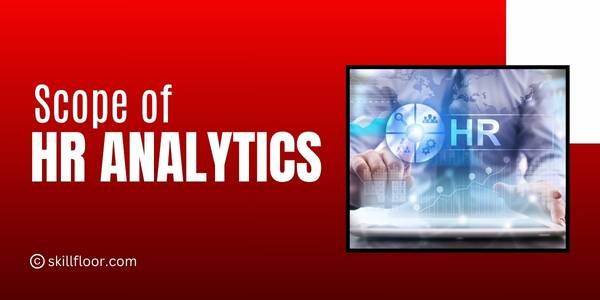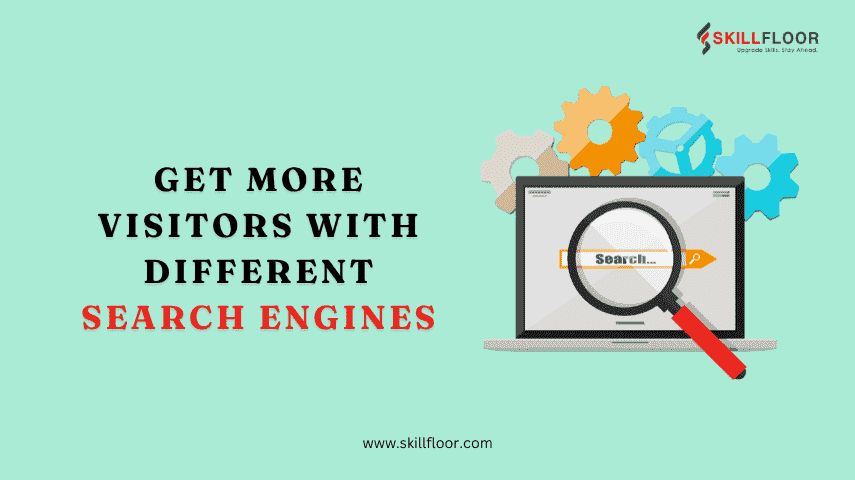Understanding the Applications of Big Data Analytics
Explore key applications of big data analytics in business, healthcare, finance, and more to drive insights and informed decision-making.

Did you know that you leave behind little bits of data each time you use an app, go somewhere, or conduct an online search? We refer to this as data. When examined, it shows trends in our actions. These patterns are used by many services to provide better assistance, more intelligent recommendations, and options that are in line with our actual demands.
Big Data is used by many organizations, including banks, farms, and hospitals, to make informed decisions. Big Data Analytics helps farmers grow more with less, banks prevent fraud early, and physicians provide better care. These are not distant concepts; instead, they are actual developments that are taking place right now and improving everyone's quality of life and safety.
It's common to question if your data is safe. Good companies abide by the law to defend it. By reviewing settings and utilizing secure apps, you may also keep safe. Proper handling of data enables us to make informed and secure decisions.
What is Big Data Analytics?
Analyzing massive data sets to identify valuable patterns is known as big data analytics. These trends aid in decision-making for both individuals and businesses. Stores can discover what consumers enjoy most, for instance. Physicians may learn which medications are more effective. Big Data is crucial in the midst of all of this.
Big Data is constantly expanding due to the volume of information arriving from phones, the internet, and other devices. This data is arranged for simpler comprehension with the help of big data analytics. We can view actual facts rather than speculating. It helps in everything from cost savings to quicker issue resolution and more intelligent planning.
Breaking Down the Main Types of Analytics
1. Descriptive Analytics
Descriptive analytics helps in our comprehension of past events. It examines historical data, such as website traffic or sales, and displays patterns or trends. It's similar to reading a narrative based on historical data to determine what succeeded and what didn't.
For example, a clothes business looks at sales from the previous month to see which items sold the best. In this way, they may learn what consumers enjoyed and what needs to be restocked.
2. Diagnostic Analytics
Diagnostic analytics takes things a step further. It helps in explaining an event. This kind of study examines the reasons why outcomes change. Investigating the cause of positive or negative results is similar to being a detective.
For example, one-week, fewer people visit a café. They discovered that there were no online advertisements and that it rained all week by looking at the weather and marketing.
3. Predictive Analytics
Predictive analytics anticipates future events. It makes predictions based on historical trends. It provides a clever notion even though it cannot predict the future with precision. It's similar to seeing indicators and carefully speculating based on typical outcomes.
For example, a grocery shop observes that before the holidays, customers purchase more snacks. In order to get ready early, they stock up on additional food every year right before the hectic season begins.
4. Prescriptive Analytics
Prescriptive analytics provides helpful insight on the next course of action. It analyzes data and makes astute recommendations. It provides guidance rather than merely stating what or why. Consider it similar to receiving advice from someone who has previously encountered the issue.
For example, a delivery service looks for quicker routes by using traffic data. Drivers may save time and gasoline every day by using the system's recommendations for when and where to drive.
Commonly Used Tools and Technologies in Big Data Analytics
1. Data Storage Technologies
Big Data Analytics requires the storage of vast volumes of data. These storage systems provide clever and easy methods to keep data secure, organized, and available for use when needed.
-
Hadoop Distributed File System (HDFS): HDFS divides large data into manageable chunks and stores them on several systems. Even in the event that one machine fails, it protects data and works well for large-scale storage.
-
Amazon S3: Amazon S3 is a utility for cloud storage. It securely stores a large amount of data online, which users may access from any location. Businesses trust it, and it's simple to use.
-
Google BigQuery: Massive volumes of data are stored and swiftly accessed through Google BigQuery. Without requiring specialized technology, it's excellent for quickly determining responses. Numerous businesses utilize it for straightforward, extensive storage requirements.
2. Data Processing Frameworks
Data must be sorted, cleansed, and comprehended once it has been saved. Frameworks for data processing assist in organizing and preparing data for easy usage and informed decision-making.
-
Apache Spark: Apache Spark is incredibly fast at handling huge data jobs. For real-time updates like stock prices, website traffic, or weather tracking, it is helpful since it performs well with live data.
-
Apache Flink: For continuous data processing, Apache Flink is excellent. Businesses may take quick action and keep informed about current events by using it to handle data as it comes in.
-
Apache Hadoop: Apache Hadoop divides huge data into manageable chunks and distributes the processing across several machines. It is useful while working on massive data projects that require organization and seamless management.
3. Data Ingestion and Integration Tools
Data must be gathered and combined from several sources before it can be used. In order to prepare data for data analytics work, these technologies assist in collecting and organizing data.
-
Apache Nifi: Data is seamlessly transferred across systems with Apache Nifi. By managing even complicated transfers with straightforward stages, it controls the flow of information and facilitates data analytics preparation.
-
Talend: Data is gathered from several sources and combined into a single system via Talend. By cleaning and combining it, it ensures that the data is ready for Data Analytics jobs and is usable.
-
Apache Kafka: Apache Kafka manages the transfer of data in real time. It is excellent for quick updates, such as app activity or online orders, and it sends clear, well-structured data directly into data analytics tools.
4. Data Warehousing & Query Engines
One essential component of dealing with big data is storing and searching vast volumes of data. With the use of these tools, everything is kept neat and accessible when required.
-
Amazon Redshift: Large volumes of data are stored via Amazon Redshift, which also enables users to run reports rapidly. Businesses frequently utilize it to monitor business performance and gain a better understanding of client behavior.
-
Snowflake: Snowflake is a cloud-based platform that allows teams to store and share data. It makes it simple to retrieve and arrange information at any time and performs well with big data sets.
-
Apache Hive: One tool for reading massive data files, particularly those kept in Hadoop-like systems, is Apache Hive. It helps users access relevant information fast by using straightforward queries.
5. Data Visualization Tools
The next step after gathering and comprehending data is to present it in an understandable manner. These tools aid in the creation of easily readable charts, graphs, and dashboards from statistics.
-
Tableau: Tableau simplifies complicated data into visual representations such as dashboards, maps, and bar charts. Even those who are not mathematically inclined can benefit from its ability to help them identify patterns and trends clearly.
-
Power BI: Power BI produces live dashboards and basic reports. It makes it simpler to distribute updates throughout the whole organization by assisting teams in tracking performance, development, and outcomes in real time.
-
Google Data Studio: Report creation and sharing is made simple with Google Data Studio. It links to many sources and aids in transforming unprocessed data into visually appealing and easily comprehensible images.
6. Machine Learning Libraries
Computers can learn from data with the use of machine learning libraries. These technologies make big data more applicable in real-world scenarios by assisting with tasks like pattern recognition, prediction, and outcome improvement.
-
Scikit-learn: Scikit-learn is excellent for beginners. It facilitates basic activities like trend analysis, prediction, and data sorting. It is popular since it is simple to comprehend and utilize.
-
TensorFlow: TensorFlow is an effective tool for creating intelligent systems. It is employed in a wide range of real-world scenarios, such as voice assistants, picture identification, and recommendation systems in streaming and retail applications.
-
PyTorch: PyTorch is renowned for its ease of use and flexibility. It is frequently utilized in studies and practical applications involving deep learning, such language and facial recognition software.
Exploring the Applications of Big Data Analytics
1. Healthcare
Healthcare is truly changing as a result of big data. It helps patients, physicians, and hospitals make better decisions, remain safe, and receive the treatment they require when they need it.
How Big Data Helps in Healthcare
-
Hospitals utilize historical medical information to identify early indicators of sickness, assisting physicians in treating patients before issues worsen or become more serious.
-
Instead of employing a single strategy for all patients, doctors now tailor their care to each patient's medical history and needs.
-
Data is used by hospitals to manage beds, schedule personnel, and cut down on wait times so that patients receive care more quickly and efficiently.
-
Health agencies monitor the transmission of viruses like flu in order to prevent outbreaks and maintain community safety.
2. Finance & Banking
Big Data is making financial companies and banks more efficient. It makes services more individualized, increases safety, and helps consumers manage their money more effectively every day faster and with fewer errors.
How Big Data Helps in Finance
-
Banks look at expenditure trends to identify unusual behavior fast. This prevents fraud and safeguards people's funds and accounts.
-
Credit history is not the only factor used by lenders. In order to make more equitable loan decisions, they now look at payment patterns and other information.
-
Data is used by financial businesses to comprehend market patterns. This assists them in avoiding high-risk investments and making wiser decisions.
-
Banks make money management simpler and more practical by recommending services, loans, or saving advice based on each individual's spending patterns.
3. Retail & E-commerce
Big Data is transforming our purchasing habits. Stores are better able to manage their inventory, provide better customer service, comprehend customer preferences, and personalize every shopping experience.
How Big Data Helps in Retail & E-commerce
-
Online retailers make product recommendations based on your previous searches, clicks, and purchases, which makes it simpler to locate what you like fast.
-
In order to prevent waste and maintain consumer satisfaction, retailers use big data techniques to monitor product trends and replenish the appropriate inventory at the appropriate time.
-
Retailers may improve goods and address issues more quickly by reading consumer evaluations and social media posts.
-
Big Data assists retailers in determining whether to increase pricing or provide discounts. This maintains goods reasonably priced and increases sales at the ideal moment.
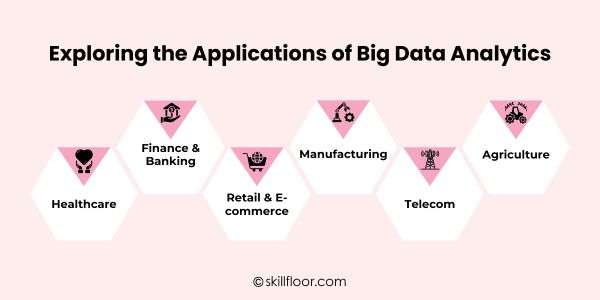
4. Manufacturing
Big Data is making industrial facilities more efficient. It reduces waste, prevents expensive delays, and enhances product quality. Improved planning and predictive maintenance, which stops equipment breakdowns before they happen, are two significant benefits.
How Big Data Helps in Manufacturing
-
Early warning indicators are sent by machines when anything is wrong. This aids teams in resolving minor issues before they become major, expensive malfunctions.
-
During manufacturing, products are checked using sensors. If something seems amiss, it's repaired immediately, saving resources and time while maintaining customer satisfaction.
-
Data assists in identifying material requirements or supply delays. This maintains efficiency and ensures that manufacturing is completed on schedule.
-
Manufacturers research the power consumption of their equipment. This contributes to waste reduction, cost savings, and an environmentally friendly workplace.
5. Telecommunications
Big Data in telecoms helps businesses enhance signals, lower service problems, and provide better customer service. Planning updates is also aided by knowing how people use their phones and the internet on a daily basis.
How Big Data Helps in Telecommunications
-
Data enables businesses to identify areas of poor signal strength or internet speed so they can address issues and improve customer experience.
-
Businesses may improve service for all customers by tracking call issues and complaints to identify common problems and address them more quickly.
-
Telecom workers utilize data to identify early warning indicators so that repairs may be made quickly before major regions experience outages or lose connectivity.
-
Data helps businesses determine where to install towers or provide better service options by revealing areas where consumers spend more time on the internet or making calls.
6. Agriculture
Farmers are growing food more intelligently due to big data. They can improve decision-making, conserve water, and produce higher-quality food with less waste by researching crop, soil, and weather trends.
How Big Data Helps in Agriculture
-
Crops may grow more efficiently with less resources when farmers utilize tools and data to determine when and where to sow, irrigate, or fertilize.
-
Farmers may pick the ideal time to sow or harvest by monitoring local weather trends, preventing harm from unforeseen heat or rain.
-
Farmers may estimate how much they will harvest by using data. This promotes improved preparation, storage, and marketing, which reduces food waste and increases revenue.
-
Farmers monitor the health and movement of their animals in order to identify issues early, enhance treatment, and prevent disease from spreading throughout the farm.
Strategic Benefits of Big Data Analytics
-
Better Decision Making: Companies as well as people may make better decisions if they have access to the correct information. Decisions based on facts rather than conjecture are guided by the power of data.
-
Faster Problem Solving: Data assists teams in resolving difficulties promptly by identifying them early. This translates into improved outcomes for all types of work, reduced downtime, and fewer delays.
-
Improved Customer Experience: Knowing what clients desire allows for more individualized service. Knowing people's requirements and habits allows banks, applications, and stores to provide better assistance.
-
Cost Savings: Businesses may reduce waste and prevent additional expenses by monitoring their financial expenditures. This keeps everything functioning properly while saving money.
-
Increased Efficiency: Data reveals what is and is not functioning. This helps teams’ function more efficiently and concentrate on the important things.
-
Competitive Advantage: Businesses may remain ahead by making good use of data. They anticipate trends, move more quickly than others, and provide necessities before others do.
Challenges in Implementing Big Data Analytics
-
Too Much Data: More data is gathered by many companies than they can manage. Knowing what to utilize and what to disregard is difficult in the absence of a defined approach.
-
Lack of Skilled People: Some people are not proficient at handling data. Finding qualified individuals who are aware of both the business requirements and the mathematics might be difficult.
-
High Costs: Data management tools and system setup might be costly. Investing in high-quality hardware and software may be difficult for smaller companies.
-
Data Privacy Concerns: Personal data must be handled carefully. Inadequate management may result in privacy concerns and a decline in user or customer confidence.
-
Poor Data Quality: If the data is outdated, jumbled, or inaccurate, the findings will be useless. To make wise judgments, you need clean and trustworthy data.
-
Changing Technology: Technology is advancing quickly. It might be challenging for smaller teams or older systems to stay up to date with new tools and data-working techniques.
Big Data Analytics is quietly impacting how we work, live, and resolve issues. It has an influence everywhere, from helping physicians in providing better care to supporting farmers and enhancing daily shopping. Data becomes an asset rather than a burden when handled carefully and purposefully. The advantages of smarter decisions, quicker service, and more efficiency outweigh the drawbacks, such as cost and privacy concerns. Knowing how to use data effectively offers new opportunities for both small and large businesses. Anyone may transform information into something beneficial and constructive with the correct attitude and basic resources.
























